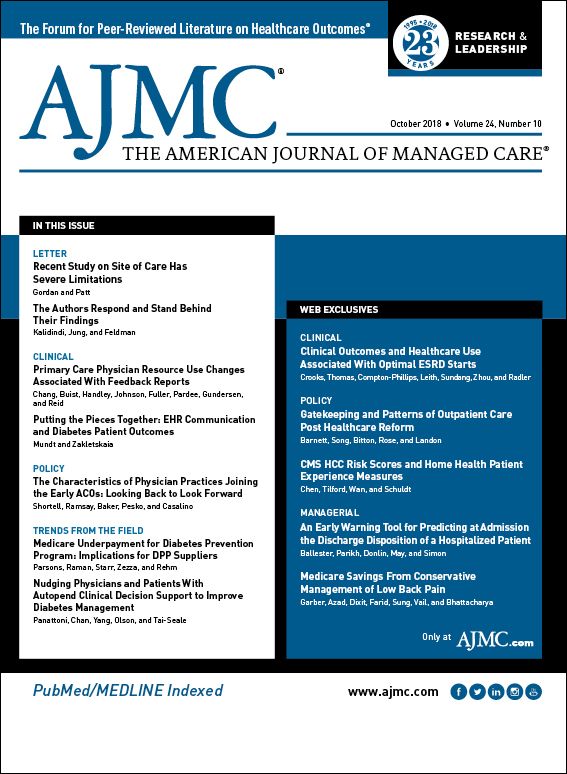- Center on Health Equity & Access
- Clinical
- Health Care Cost
- Health Care Delivery
- Insurance
- Policy
- Technology
- Value-Based Care
From the Editorial Board, October 2018: Bruce W. Sherman, MD
With growing recognition of the prevalence of mental health issues in the US population, now is the time to better understand and meaningfully address the behavioral health needs of lower-income earners. According to the National Institute of Mental Health, low-income individuals are 2 to 5 times more likely to experience a diagnosable mental disorder than individuals in the highest socioeconomic group. Perhaps more concerning is the fact that little is known about how low-wage earners use and adhere to evidence-based behavioral health services.
Complicating the issue is that low-wage earners face an array of barriers to mental health services. The movement of behavioral health clinicians out of health plan networks has reduced in-network provider access. Hourly employees may also have to choose between earning wages or sacrificing pay to seek care during the workday. Growing employer adoption of high-deductible health plans, stifled wage growth, limited in-network access, and increasing deductibles compound healthcare affordability issues and may well contribute to increased stress and exacerbation of pre-existing mental health issues.
Our recent research has characterized high-level health benefits utilization patterns among workers by wage level, but it did not specifically address behavioral health services use. We are unaware of any published analyses assessing behavioral healthcare use among low-income earners. However, on the basis of preliminary data, we hypothesize that low-wage workers are less likely to access ambulatory behavioral health services or be taking psychoactive medications and are more likely to have behavioral health—related emergency department visits and hospitalizations. Those with both behavioral health issues and chronic conditions such as diabetes or heart disease (also more prevalent in lower-income populations) are perhaps at the greatest risk for suboptimal condition management.
Ongoing research will be helpful in assessing new models of behavioral health service delivery and, importantly, the efficacy of integrated primary care and behavioral healthcare, particularly for low-income workers. There is also an urgent need to better understand the potential efficacy and outcomes of less costly behavioral health services for low-income workers, including employee assistance programs and telebehavioral health. To our knowledge, this is yet another area with a limited research base that warrants further exploration. Findings may well yield new insights, prompting changes in benefit design and communications to encourage greater patient awareness, acceptance, and use.
From a broader perspective, social determinants of health (SDoH), including wage, have particular significance for low-income populations; their relation to the prevalence and severity of mental health disorders also merits more in-depth analysis. If strong associations are identified, a case can be made to direct additional resources toward social supports. For employers, and especially those in the business of healthcare, recognition of the impact of SDoH on employee well-being, engagement, and business performance can likely further justify additional resource support, including critical review of mental health benefits offerings.
These considerations assume particular significance for healthcare organizations considering risk-based contracting. An understanding of the interrelationship among behavioral health conditions, patient SDoH concerns, and chronic illness can help to better target service delivery priorities and thereby improve treatment effectiveness and outcomes.

Trends in Hospital Pricing for Vulnerable Emergency Department Users, 2021-2023
December 4th 2025Self-pay emergency department prices rose significantly from 2021 to 2023, especially at for-profit and system-affiliated hospitals, highlighting growing affordability challenges for uninsured and underinsured patients.
Read More
Integrated Care for Chronic Conditions: A Randomized Care Management Trial
December 3rd 2025The authors sought to understand the differential impact of payer-led community-based care management approaches on stakeholder-oriented outcomes for publicly insured adults with multiple chronic conditions.
Read More

